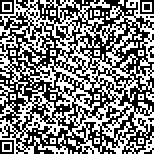本文已被:浏览 342次 下载 286次
中文摘要: 脉冲等离子体推力器(Pulsed Plasma Thruster,PPT)因其推力小、质量轻、功率低等特点,被认为是微小卫星执行某些推进任务的电推进装置之一,但因效率低下,一直为人所诟病。针对这一现状,将聚四氟乙烯(PTFE)掺入质量配比为2%、5%(6%)、10%和15%的铜和碳,制成掺铜工质(PTFE-Cu)和掺碳工质(PTFE-C)。在3种不同放电能量(1J、1.44J、2.25J)下,测量PPT使用这些工质工作时的电压、电流和脉冲烧蚀质量,并根据结果估算PPT的元冲量、比冲、效率等推进性能。此外,还基于发射光谱理论,对等离子体的种类、特性进行了诊断研究。研究结果表明,烧蚀质量随掺杂量的增加而增加;元冲量随着掺碳量的增加而增加,PTFE-Cu-10%的元冲量最大,为56.47(μN?s);使用PTFE-C-2%和PTFE-Cu-10%时,PPT的性能最好;掺碳和铜在一定程度上促进了PPT的电离过程,进而提高了推力器效率。
Abstract:Pulsed plasma thruster(PPT) is regarded as an electric propulsion device for some propulsion mission of micro-spacecraft for its small thrust,light weight and low power. However, it has been criticized for its inefficiency. In view of this situation,adopting polytetrafluoroethylene (PTFE) as the propellant, PTFE is doped with 2, 5(6), 10 and 15 percent C or Cu to make two new types of propellant as the research object. The discharge voltage and current waveform were recorded, the ablation mass weighted under three different discharge energies(1J, 1.44J, 2.25J), and the impulse bit, specific impulse,efficiency of PPT were estimated based on the results. The species, characteristics of plasma were also detected and diagnosed with the emissive optical spectrometer. The research results show that the ablation mass increases with the increase of the doping amount; the impulse bit increases with the increase of the C dopant, and the PTFE-Cu-10% impulse bit is the largest, which is 56.47(μN?s); PTFE-C-2% and PTFE-Cu-10% have the best performance in all C and Cu dopant PTFE specimens, and they promote the ionization process to some extent, thereby improving the thruster efficiency.
文章编号:20210306 中图分类号:V19 文献标志码:A
基金项目:
引用文本:
涂 演,刘向阳,尹诗明,张鲲鹏,陈 川,张 晗.新型固体工质脉冲等离子体推力器试验研究[J].飞控与探测,2021,(3):40-47.
涂 演,刘向阳,尹诗明,张鲲鹏,陈 川,张 晗.新型固体工质脉冲等离子体推力器试验研究[J].飞控与探测,2021,(3):40-47.

